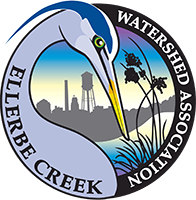Durham-Wide BioBlitz 2020
Monday, March 30 - Sunday, April 12
Since many of us are remaining at or near home as part of social distancing, we have an opportunity to share digitally and learn more about living communities all across Durham. We hope this will be a fun, engaging activity and a reminder that no matter where we are right now, we’re all connected with each other and the wider world.
A BioBlitz is a survey of all living things in an area during a specific time using community science (also called citizen science). Gathering large amounts of data in a short time like this depends on the participation of people who aren't professional scientists. Collecting data is especially important right now as researchers around the world are unable to travel or collect data themselves.
To participate in the Durham-Wide BioBlitz, just make observations of any living things around you from Monday, March 30, through Sunday, April 12, and submit them through iNaturalist. Make sure to include the location for each observation; this is how it will become part of the BioBlitz. More directions on how to participate are below.
You can make observations from anywhere! This includes inside your home, through your window or outdoors. For your own safety and that of our community, follow the CDC’s guidelines. Follow along for challenges and virtual classes to inspire ways to make observations.
This BioBlitz is for Durham County, but we welcome our neighbors living in other parts of the Triangle, the state or the world to follow along as well. We know our community extends beyond these borders. While observations outside Durham County won't become part of the Durham-Wide BioBlitz, they will be valuable contributions to iNaturalist's data and you can still connect with this virtual community. Later in April, we can all participate in the City Nature Challenge together.
Virtual Public Programs
Looking for ways to explore around your home? Want to learn more about the living things you're discovering? Join us at any or all of these free virtual programs!
All programs will be hosted through Zoom, a free video-chat software. Install this software before attending a program. All programs will be recorded and shared later, so if you miss one you're interested in just check back here later.
-
Getting Started | Tuesday, 3/31, 10-10:30 a.m.
-
Join Kati Henderson (Duke Gardens) and Max Cawley (Museum of Life + Science) to get started using iNaturalist and making observations from your home.
View the recording on youtube.
-
Insects and Their Roles | Thursday, 4/2, 7-7:30 p.m.
-
Share the bugs you saw and learn about the roles they play in the ecosystem with Max Cawley (Museum of Life + Science).
View the recording on youtube.
-
Herping | Saturday, 4/4, 3-3:30 p.m.
-
Look for reptiles and amphibians and learn all about these fascinating animals with Grace Bowman (Piedmont Wildlife Center).
View the recording on youtube.
-
Birding | Tuesday, 4/7, 10-10:30 a.m.
-
Learn how to listen and look for birds and get tips for identification with Grace Bowman (Piedmont Wildlife Center) and Max Cawley (Museum of Life + Science).
View the recording on youtube.
-
Phenological Changes | Thursday, 4/9, 7-7:30 p.m.
-
Explore the ways things have changed since last week and learn about phenological changes with Max Cawley (Museum of Life + Science).
View the recording on youtube.
-
Plants All Around Us | Saturday, 4/11, 3-3:30 p.m.
-
Look closer at the plants that surround us and explore the ways people and other living things interact with them, with Kati Henderson (Duke Gardens).
Recording coming soon.
HOW TO PARTICIPATE
1. If you don’t have an iNaturalist account, make one through the website or smartphone app (it’s free).
2. Find living things near you Monday (3/30) - Sunday (4/12) and create an observation in iNaturalist for each one.
Create a new observation
- Take a photo or sound recording of the living thing. This way others can verify your identification and it can be used in scientific research.
- Enter your best guess at identification. It’s OK if it’s broad, like “plants.” If you’re not sure, you can leave it blank.
- Enter the location of the living thing.
- If the living thing is one that people care for, like a pet or garden plant, mark it as “Captive / Cultivated.”
- If there’s anything else you observed about the living thing, write about it in Notes.
Tips for making observations that others will be able to identify:
- Make sure your photos are in focus, not blurry.
- Take photos that show as much detail of the living thing as possible. Color, textures and the shape and size of different parts are all useful in identification. Show the top, bottom and side of the living thing if you can.
- For small things, get as close as you safely can when taking your photo. For example, when identifying ants, get close so that they fill as much of the photo as possible, while still keeping the ant in focus.
- For large things, show the whole living thing and details of any smaller parts. For example, when identifying trees it's useful to have photos of the whole tree and close-ups of a leaf, the bark and twigs.
For more information about submitting observations, read these Quick Guides to the iNaturalist iPhone and Android Apps created by Chris Goforth, head of Citizen Science at the North Carolina Museum of Natural Sciences. You can also use iNaturalist's Getting Started guide and watch their video tutorials.
There are many ways to find living things around you, no matter where you are. Try:
- Joining one of our live, video-based programs (see the schedule above)
- Choosing an observation location and checking it once a day for anything that’s new
- Closely observing one small spot for 10 minutes to notice small or inconspicuous living things
Please note: as long as you make your observation March 30 and April 12, you can submit it to iNaturalist after the BioBlitz ends.
3. If you have the knowledge to help identify living things, suggest identifications for other people’s observations.
Submit your identifications through iNaturalist (video demonstrations coming soon)
- Go to the Durham-Wide Bioblitz 2020 iNaturalist project through your browser or app to see all of the submitted observations.
- If you find an observation you can identify, click on it. Then click on "Suggest an Identification" and add your identification.
- All observations need more than one person's identification, so suggest an identification for observations you know even if someone else has already said the same thing. This is a team effort!
To learn more about identification, check out:
- Amphibians and Reptiles of North Carolina from the NC Herpetological Society
- Merlin Bird ID from the Cornell Lab of Ornithology
Explore our amazing community
Whether or not you submit observations through iNaturalist, browse through the observations to be part of our beautiful, biodiverse community of people and other living things.
BioBlitz hosted by











